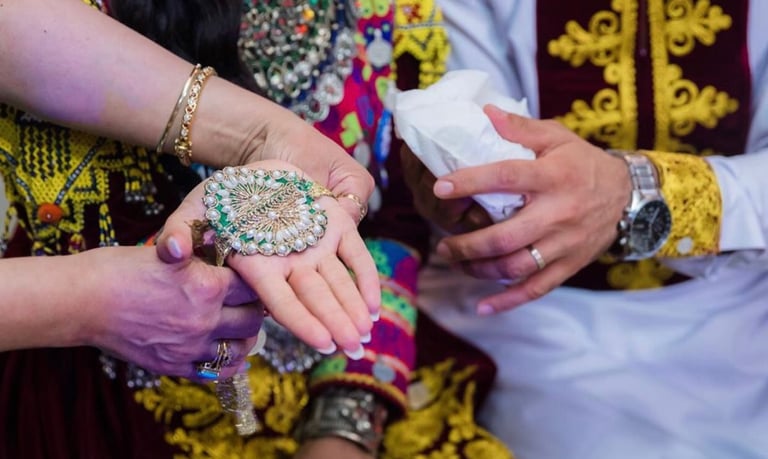Afghan Wedding Culture
CULTURE


The Afghan community, with its diverse ethnic groups, similarly observes its own distinct marriage customs that can vary from one group to another.
Culture of Marriage in Afghanistan
As we all know, marriage is a natural life event that, over time, has evolved into a cultural tradition within human societies.
The Afghan community, with its diverse ethnic groups, similarly observes its own distinct marriage customs that can vary from one group to another.
Before a young man marries, several traditional steps are typically observed in Afghan society:
Searching for a suitable bride
Proposing marriage (Khwāstgārī)
Offering sweets (Lafz—or Dosmall)
Engagement ceremony (Shīrīnī Khoorī)
Gifts for the bride on holidays (Eidi or Eid Brati)
The wedding
1. Searching for a Suitable Girl:
The groom’s family—or someone close like his mother or sister—searches for a girl who meets the family’s standards. An ideal bride, in many Afghan communities, is respectful toward her in-laws, well-mannered, with a good personal background and reputation. As customs vary regionally—for instance, in southern Afghanistan, families may prefer plump and beautiful girls, while in the north among Uzbeks and Turkmens, skilled carpet-weavers are especially valued.
2. Marriage Proposal (Khwāstgārī):
After choosing a suitable girl, the groom’s family visits the bride’s family to formally express their intention to marry. They await a response and, if accepted, the groom, along with close relatives like his uncle, returns to discuss further details. The groom’s family must earn approval from all key members of the bride’s family, who in turn conduct their own inquiries about the groom and his background. Once both sides agree, they set a date for the engagement.
3. Offering Sweets (Lafz / Dosmall):
On this occasion, elders from both families exchange a basket filled with sweets, and the groom’s family offers money to the bride’s family. They then discuss the upcoming engagement ceremony. In Afghanistan, it is customary that the bride’s father hosts the engagement; if he declines, he typically provides a monetary gift on the same day.
4. Engagement Ceremony (Shīrīnī Khoorī):
For this celebration, both families invite their relatives. The bride and groom sit together on a platform decorated in warm creamy tones. The bride’s family presents a basket of sweets adorned with matching decoration, and the groom’s family responds with similar gifts. Traditional Afghan clothing is often worn by both men and women at this event.
5. Holiday Gifts for the Bride (Eidi / Eid Brati):
If the engagement overlaps with religious holidays, the groom’s family brings items like cake or clothing to the bride’s home. On Nowruz—the Afghan New Year—they may deliver fish, zulbia (sweet pastry), or a new dress. Popular traditional gifts also include hand-woven shawls (chadar gāj) and intricately embroidered trousers, showcasing Afghanistan’s rich artisanal heritage.
6. Henna Night (Shāokhīnah):
One evening before the wedding, well-to-do families often hold a Henna Night. In some cases, a small wedding ceremony is also performed. The bride and groom adorn each other’s hands with henna, symbolizing beauty and the blessings of marriage.
7. The Wedding:
This is the central and most significant ceremony of the marriage process. In traditional Afghan weddings, the bride and groom offer each other fruit juice (a gesture of love and unity), and a father—either the bride’s or groom’s—places rings on their fingers. It’s important to note that customs may differ among various Afghan ethnic groups.
